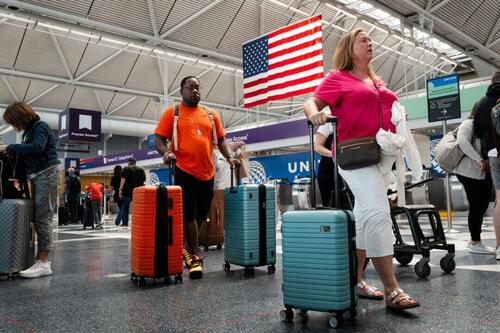Japanese Firms Prepare for Price Hikes: Navigating Inflation and Rising Costs
Tháng 4 16, 2025
Tragic Texas Track Meet Incident: The Karmelo Anthony Case Unveiled
Tháng 4 16, 2025Navigating the REAL ID Requirement for Domestic Flights: What You Need to Know
As of May 7, 2025, travelers within the United States must be prepared for a significant change regarding identification when flying domestically. The introduction of the REAL ID requirement comes as part of the enforcement of the REAL ID Act of 2005, a pivotal legislation designed to tighten ID security and mitigate fraud in the wake of increasing concerns about identity theft and security breaches.
Understanding the REAL ID Requirement
The primary takeaway from this new regulation is that travelers must present a REAL ID-compliant driver’s license or a different TSA-approved form of identification to pass through airport security. The TSA (Transportation Security Administration) recognizes several forms of identification, including a U.S. passport.
It’s crucial for every traveler to assess whether their current driver’s license meets the REAL ID criteria. An ordinary driver’s license will no longer suffice for air travel, which means it’s vital to stay ahead of this requirement to avoid travel disruptions.
Documentation Needed for REAL ID Application
Applying for a REAL ID involves gathering certain documents to ensure proper verification. The requirements include:
- Proof of your full legal name
- Your date of birth
- Your Social Security number
- Two documents that confirm your address
- Documentation that validates your lawful status in the United States
By preparing these documents beforehand, applicants can streamline the application process significantly and minimize the chances of delays.
Exploring Alternative Forms of ID
For those who may not wish to obtain a REAL ID, there are acceptable alternatives that can be used for domestic flights. A valid U.S. passport or an Enhanced Driver’s License (EDL) can be presented at security checkpoints. However, it is important to note that while the REAL ID is purely for domestic travel purposes, a passport remains an absolute necessity for international travel, serving as the primary form of identification outside of the U.S.
The Application Process for a REAL ID
Applying for a REAL ID can be conveniently started online, where individuals can fill out preliminary applications. It’s essential to upload all required documents and then visit a local DMV (Department of Motor Vehicles) office to complete the process. Given the heightened demand for REAL IDs, especially as the deadline approaches, travelers should be aware that many states are currently experiencing high volumes of applicants, leading to limited appointment availability. Booking early to secure an appointment may reduce future stress and uncertainty.
Preparing for the Change
The REAL ID requirement has the potential to impact how efficiently travelers can navigate airport security. Individuals without a compliant form of identification may face additional screening and, in some cases, could be denied entry to the security area altogether. Therefore, it is highly advisable for anyone planning to fly domestically after May 7, 2025, to address their ID status sooner rather than later to avoid any disruptions in their travel plans.
In conclusion, as the deadline for REAL ID compliance approaches, being informed and prepared is key. Securing a REAL ID or an alternative identification will help ensure that your travel experience remains smooth and enjoyable, allowing you to focus on your journey rather than your compliance status.

